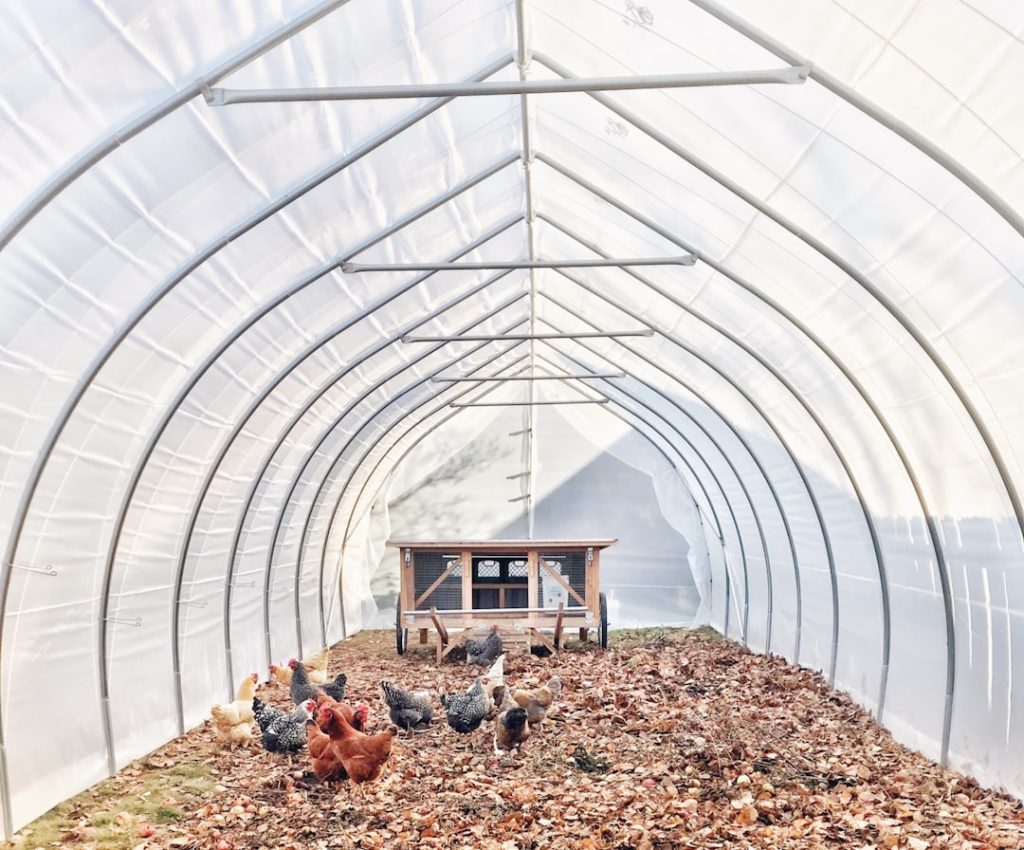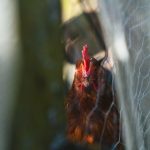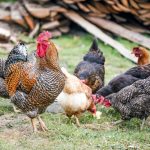Dogs are domesticated animals known for their loyalty, intelligence, and protective instincts. However, they retain predatory behaviors inherited from their wild ancestors. These instincts can manifest as chasing, herding, or potentially aggressive actions towards smaller animals, including chickens.
Dog owners must recognize and manage these innate tendencies to ensure the safety of both their canine companions and any poultry they may keep. Despite their predatory nature, dogs are highly adaptable and trainable animals. With proper socialization and consistent training, many dogs can learn to coexist peacefully with chickens and other small animals.
Understanding canine body language, vocalizations, and behavior patterns is crucial for owners to effectively manage interactions between dogs and chickens. It is important to note that each dog is unique, with individual personalities shaped by genetics, experiences, and training. As such, the process of teaching a dog to safely interact with chickens may vary in difficulty and duration.
Owners should approach this training with patience, consistency, and a thorough understanding of their dog’s specific needs and tendencies.
Table of Contents
- 1 Creating a Safe and Secure Chicken Coop
- 2 Training Your Dog to Coexist with Chickens
- 3 Supervising Interactions Between Dogs and Chickens
- 4 Using Positive Reinforcement to Modify Dog Behavior
- 5 Implementing Physical Barriers to Separate Dogs and Chickens
- 6 Seeking Professional Help for Persistent Issues
- 7 FAQs
Key Takeaways
- Dogs have natural predatory instincts, which can pose a threat to chickens if not properly managed.
- A secure chicken coop with strong fencing and a covered run can help protect chickens from potential dog attacks.
- Training your dog to coexist peacefully with chickens involves positive reinforcement and consistent supervision.
- It’s important to closely supervise interactions between dogs and chickens to prevent any potential harm.
- Positive reinforcement, such as treats and praise, can be used to modify a dog’s behavior around chickens.
Creating a Safe and Secure Chicken Coop
Secure Chicken Coop Design
When it comes to keeping chickens safe from dogs, the first line of defense is a secure and well-designed chicken coop. The coop should be constructed with sturdy materials and include a predator-proof locking mechanism to prevent dogs from gaining access. Additionally, the coop should be elevated off the ground to discourage digging and provide a safe retreat for the chickens.
Coop and Run Layout Considerations
It’s also important to consider the layout of the chicken coop and run to minimize potential interactions between dogs and chickens. For example, the coop should be situated in an area that is not easily accessible to dogs, and the run should be enclosed with a secure fence to prevent any unwanted visits.
Reducing Conflict and Ensuring Well-being
By creating a safe and secure environment for the chickens, dog owners can help reduce the risk of conflicts and ensure the well-being of their feathered friends.
Training Your Dog to Coexist with Chickens
Training your dog to coexist peacefully with chickens requires patience, consistency, and positive reinforcement. It’s important to start training as early as possible, ideally when the dog is still a puppy, to establish positive associations with chickens and discourage predatory behaviors. This can be achieved through controlled exposure to chickens while on a leash, rewarding calm and non-threatening behavior, and redirecting any signs of aggression or prey drive.
In addition to basic obedience training, such as sit, stay, and leave it commands, dog owners can also use desensitization techniques to help their dogs become more comfortable around chickens. This may involve gradually increasing the proximity and duration of interactions with chickens while providing rewards for calm and respectful behavior. By consistently reinforcing positive interactions and setting clear boundaries, dog owners can help their dogs learn to coexist peacefully with chickens.
Supervising Interactions Between Dogs and Chickens
Even after training, it’s important for dog owners to closely supervise interactions between their dogs and chickens. This means being vigilant and proactive in preventing any potential conflicts or accidents. Supervision can involve physically being present during interactions, using visual or auditory cues to monitor the dog’s behavior, and intervening if necessary to redirect or remove the dog from the situation.
It’s also important to recognize signs of stress or discomfort in both the dog and the chickens during interactions. For example, a dog that is overly fixated on the chickens, exhibiting tense body language, or displaying predatory behaviors should be immediately redirected and given a time-out. Similarly, chickens that are showing signs of distress or fear, such as flapping wings or vocalizing loudly, should be protected from further stress by removing them from the situation.
Using Positive Reinforcement to Modify Dog Behavior
Positive reinforcement is a powerful tool for modifying dog behavior and encouraging desirable interactions with chickens. This involves rewarding the dog for calm, non-threatening behavior around chickens with treats, praise, or playtime. By consistently reinforcing positive behaviors, such as ignoring or showing indifference towards the chickens, dog owners can help their dogs understand what is expected of them in the presence of chickens.
It’s important to be patient and consistent when using positive reinforcement, as it may take time for dogs to learn new behaviors and habits. Additionally, it’s crucial to avoid punishment-based training methods, as these can create fear and anxiety in dogs, leading to further behavioral issues. Instead, focusing on rewarding and reinforcing positive behaviors will help build a strong foundation for peaceful coexistence between dogs and chickens.
Implementing Physical Barriers to Separate Dogs and Chickens
Creating Designated Areas
In some cases, implementing physical barriers may be necessary to safely separate dogs and chickens. This can include using fencing or netting to create designated areas for the dogs and chickens, such as separate yards or enclosures. By creating clear boundaries and preventing direct access between the two animals, dog owners can minimize the risk of conflicts and ensure the safety of both their pets.
Ensuring Barrier Security
It’s important to ensure that any physical barriers are secure and well-maintained to prevent any potential breaches by dogs or other predators.
Providing Enrichment and Stimulation
Additionally, providing enrichment and stimulation within each designated area can help keep both dogs and chickens mentally and physically engaged while they are separated.
Achieving Harmony through Physical Barriers and Training
By implementing physical barriers in conjunction with training and supervision, dog owners can create a harmonious living environment for both their dogs and chickens.
Seeking Professional Help for Persistent Issues
If despite your best efforts, your dog continues to exhibit problematic behaviors around chickens, it may be necessary to seek professional help from a certified dog trainer or animal behaviorist. These professionals have the expertise and experience to assess your dog’s behavior, identify underlying issues, and develop a customized training plan to address them. Professional help may involve one-on-one training sessions, behavior modification techniques, or specialized training programs designed to help dogs overcome predatory behaviors.
Additionally, a professional can provide guidance and support for dog owners in implementing effective management strategies and creating a safe environment for their chickens. By seeking professional help for persistent issues, dog owners can work towards resolving behavioral problems and fostering a peaceful coexistence between their dogs and chickens. In conclusion, understanding the behavior of dogs, creating a safe and secure chicken coop, training your dog to coexist with chickens, supervising interactions between dogs and chickens, using positive reinforcement to modify dog behavior, implementing physical barriers to separate dogs and chickens, and seeking professional help for persistent issues are all essential steps in ensuring the well-being of both your dogs and your chickens.
By taking a proactive and holistic approach to managing their interactions, dog owners can create a harmonious living environment where both pets can thrive. With patience, consistency, and dedication, it is possible for dogs and chickens to coexist peacefully and even form unique bonds with each other.
If you’re looking for ways to keep your dog from scaring your chickens, you may want to consider investing in a secure chicken coop like the Producers Pride Sentinel Chicken Coop. This coop is designed to keep your chickens safe from predators, including dogs. You can learn more about it in this article on PoultryWizard.
FAQs
How can I keep my dog from scaring my chickens?
To keep your dog from scaring your chickens, you can start by training your dog to be calm and gentle around the chickens. You can also use positive reinforcement to reward your dog for good behavior around the chickens.
What are some physical barriers I can use to keep my dog away from my chickens?
Physical barriers such as fences, chicken wire, or netting can be used to keep your dog away from your chickens. Make sure the barriers are secure and tall enough to prevent your dog from jumping over or digging under them.
Are there any training techniques I can use to teach my dog to leave the chickens alone?
You can use training techniques such as desensitization and counter-conditioning to teach your dog to leave the chickens alone. This involves gradually exposing your dog to the chickens in a controlled and positive way, and rewarding your dog for ignoring the chickens.
What are some other ways to keep my dog from scaring my chickens?
In addition to training and physical barriers, you can also provide your dog with plenty of exercise and mental stimulation to reduce their prey drive. Supervising your dog when they are around the chickens and providing a safe and comfortable space for the chickens to retreat to can also help.
Meet Walter, the feathered-friend fanatic of Florida! Nestled in the sunshine state, Walter struts through life with his feathered companions, clucking his way to happiness. With a coop that’s fancier than a five-star hotel, he’s the Don Juan of the chicken world. When he’s not teaching his hens to do the cha-cha, you’ll find him in a heated debate with his prized rooster, Sir Clucks-a-Lot. Walter’s poultry passion is no yolk; he’s the sunny-side-up guy you never knew you needed in your flock of friends!









